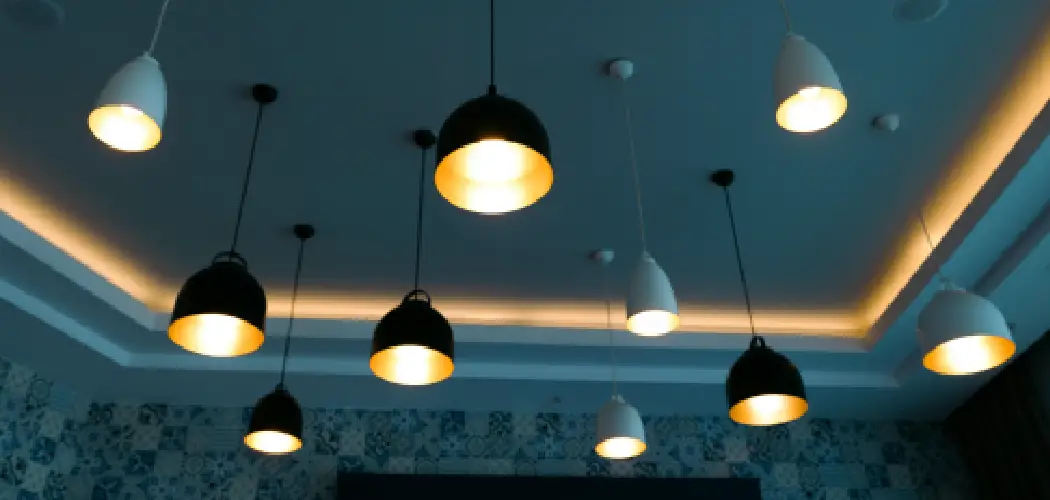Ceiling lights are more than just functional fixtures; they are integral components in defining the style and ambiance of a room. A well-chosen ceiling light can dramatically transform a space, enhancing its aesthetic appeal while providing adequate illumination for various activities. Whether creating a cozy atmosphere in a living room or a bright workspace in a kitchen, selecting the right ceiling light is crucial to achieving the desired effect. Factors such as the size and purpose of the room, as well as existing décor, play significant roles in determining the appropriate lighting solution.
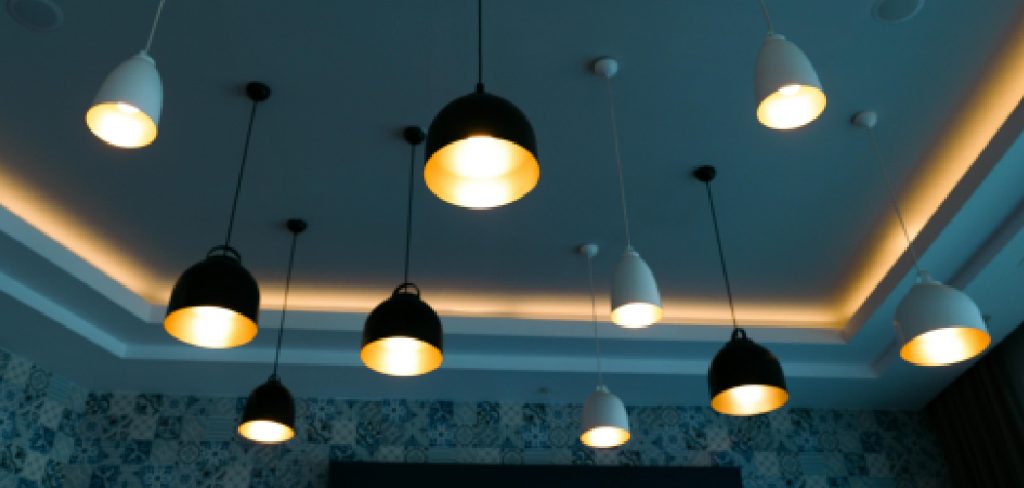
This guide will delve into practical tips on how to choose a ceiling light that complements your room’s style and functionality. It will explore different types of ceiling lights, discuss how to align lighting styles with specific room functions, and highlight essential considerations such as brightness, placement, and design.
Understanding the Different Types of Ceiling Lights
Choosing the right ceiling light involves understanding the various available types and how they fit your room’s character and needs. Here’s a detailed look at some popular ceiling light options:
Chandeliers
Chandeliers are synonymous with elegance and grandeur, making them perfect for creating a bold statement in dining rooms, living rooms, or entryways. They provide ambient lighting and serve as focal points that transform larger spaces. Available in styles ranging from modern and traditional to crystal and rustic, chandeliers can complement diverse décors. While a modern chandelier with sleek, clean lines suits contemporary settings, a crystal chandelier exudes opulence in more traditional homes. Understanding your space’s existing décor and ambiance is crucial in selecting a chandelier style that enhances your room.
Flush and Semi-Flush Mount Lights
Flush mount lights are ideal for rooms with low ceilings as they sit directly against the ceiling, offering a streamlined look suitable for hallways and bedrooms. Conversely, semi-flush mount lights hang slightly lower, adding dimension and interest, making them suitable for mid-height ceilings. Consider the room size and ceiling height when choosing between flush and semi-flush. A large, open room may benefit from the additional depth a semi-flush light provides, while more compact spaces may better accommodate the sleekness of a flush mount.
Pendant Lights
Pendant lights offer both style and functionality, ideal for providing task or focused lighting in kitchens, over islands, or above dining tables. Their varied designs, sizes, and materials bring personality to a room. Whether opting for a single statement pendant or clustering multiple pendants for dramatic effect, they can enhance a space’s visual appeal and functionality. Consider the height at which pendant lights hang to ensure adequate lighting while fitting seamlessly into the room’s design.
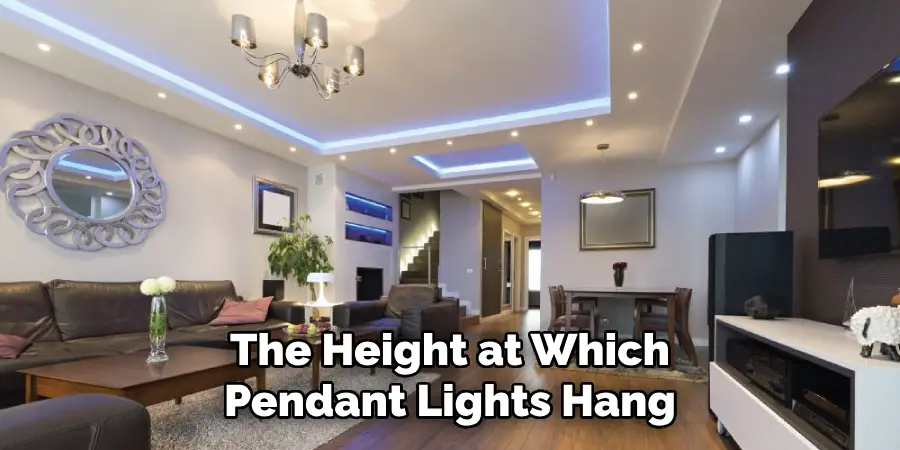
Recessed Lights (Can Lights)
Recessed lights provide unobtrusive, minimalistic lighting that’s great for kitchens, bathrooms, or modern living rooms. They offer ambient or task lighting without occupying ceiling space, making them perfect for minimalist designs. Their clean, streamlined appearance allows for a consistent light spread, making spaces appear larger and more open. Implementing recessed lighting requires careful planning to ensure optimal placement and brightness for each specific area.
Track Lighting
Track lighting is versatile and allows you to adjust the direction of the light, making it suitable for highlighting artwork or architectural features. This adaptability is particularly advantageous in rooms requiring flexible lighting solutions, such as home offices or galleries. With track lighting, you can easily change the focus from one area to another, accommodating changing needs or aesthetic preferences over time.
Flush LED Panels
For a modern, energy-efficient option, flush LED panels offer clean and sleek lighting that’s ideal for minimalist or contemporary homes. They provide even light distribution and are available in various shapes like squares, rectangles, or circles, aligning with diverse design needs. LED panels deliver aesthetic benefits and energy savings, making them a sustainable choice for the environmentally conscious household.

How to Choose a Ceiling Light: Match the Light to the Room’s Function
Living Room
Selecting a ceiling light for the living room is key to creating a cozy and relaxing ambiance. For ambient lighting, options like chandeliers, flush mounts, or recessed lighting can be effective, each offering a different aesthetic depending on ceiling height and room size. Chandeliers often serve as a striking centerpiece that draws the eye and adds a touch of elegance, suitable for larger rooms with higher ceilings. On the other hand, Flush mounts are practical for rooms with lower ceilings, providing a sleek and subtle light source. To complement the central ceiling fixture, consider layering with floor lamps or wall sconces, which can add warmth and allow for lighting adjustments based on activities or moods.
Dining Room
Lighting is crucial in the dining room for setting the tone of meals and gatherings. Pendant lights or chandeliers provide ambient lighting directly over a dining table, creating a focal point that enhances the dining experience. When selecting a fixture, ensure it is proportional to the table’s size and the room, as this balance is essential for aesthetic harmony and effective illumination. Adjustable fixture options or those with dimmer capabilities can further customize the dining ambiance, catering to intimate dinners and lively gatherings.
Kitchen
The kitchen demands bright task lighting to facilitate meal preparation and cooking. Recessed lights, track lighting, or strategically placed pendant lights over islands are optimal solutions for illuminating workspaces efficiently. It’s important to balance functional lighting with stylish elements in kitchens that serve as entertaining spaces. Accent lighting or decorative pendants can enhance aesthetic appeal without compromising utility, culminating in a practical and inviting space for family and friends.
Bedroom
Softer lighting is preferred in bedrooms to promote rest and relaxation. Flush mounts or semi-flush mounts can provide evenly distributed ambient light, while a chandelier might introduce elegance and a hint of luxury to the space. To adapt the lighting to different times of day or moods, incorporating dimmer switches can offer versatile light control, allowing for a gentle transition from bright lighting during dressing or reading to a soothing glow for relaxation and sleep.
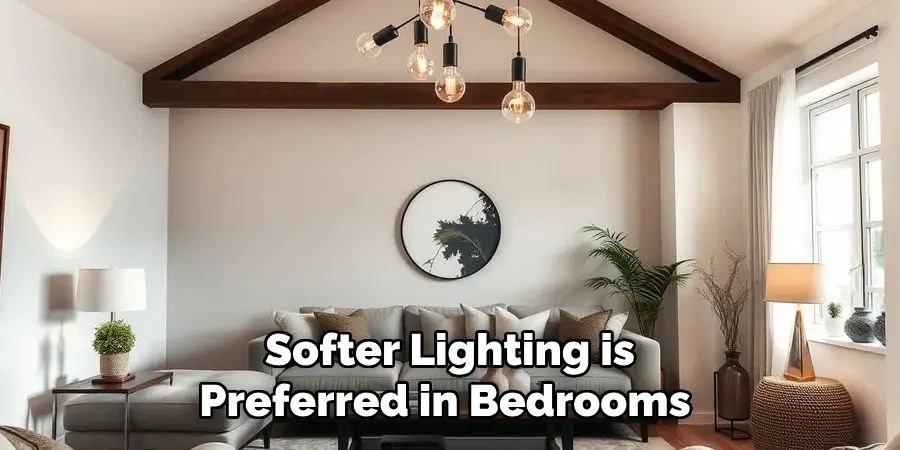
Bathroom
Choosing the right lighting for bathrooms involves selecting fixtures that are both moisture-resistant and capable of offering functional and ambient lighting. Task lighting is essential for shaving or makeup application, often achieved with wall-mounted lights near mirrors. Meanwhile, ambient lighting from recessed lights or flush mounts ensures even light distribution throughout the room, creating a balanced and relaxing atmosphere, even in smaller spaces. Proper placement and spacing of fixtures are crucial to avoid shadows and ensure functionality is met without sacrificing style.
Consider the Room’s Size and Ceiling Height
Measure the Room:
Properly measuring a room’s dimensions and ceiling height is crucial in selecting an appropriately sized light fixture. Start by measuring the length and width of the room in feet. Add these two numbers together, then convert that number directly into inches to determine the ideal diameter for a ceiling fixture. For instance, a room that is 10 feet by 12 feet would suggest a fixture diameter of 22 inches. This guideline ensures the fixture is proportionate to the space, preventing a small fixture from appearing lost in a large room or an oversized fixture from overwhelming a smaller area.
Ceiling Height Considerations:
The ceiling height greatly influences the type of fixture suitable for the room. In rooms with high ceilings, larger chandeliers or elongated pendant lights that hang lower can create a grand, welcoming effect. They draw the eye upward and fill the vertical space effectively. Conversely, flush mounts or recessed lights are preferable in rooms with lower ceilings. These types keep the ceiling open and prevent the room from overcrowding. For standard 8-foot ceilings, a general rule is to hang chandeliers or pendant lights about 7 feet above the floor. This height ensures adequate head clearance and lighting without encroaching on the living space. You can hang fixtures lower in rooms with taller ceilings to maintain balance and proportion.
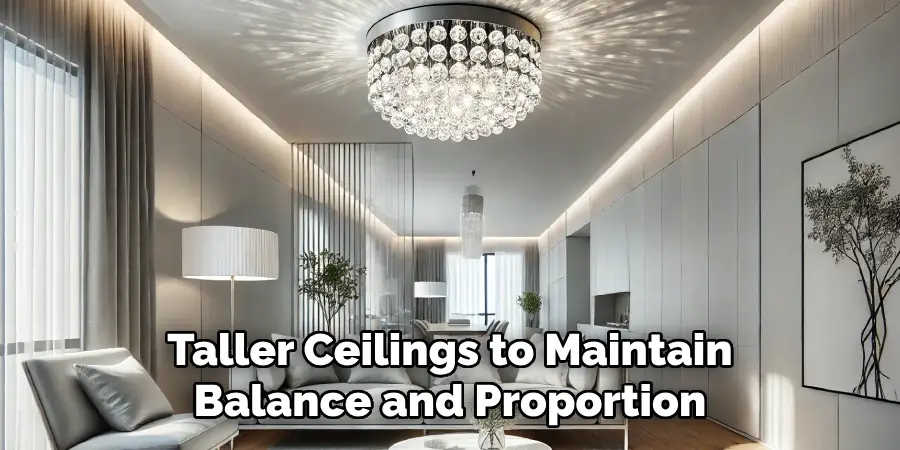
Choosing Adjustable Fixtures:
If you’re uncertain about a light fixture’s exact placement or desired height, consider selecting an adjustable option. Adjustable fixtures allow for flexibility in hanging height, catering to various aesthetic preferences or practical needs without the commitment to a fixed position. This adaptability is particularly useful in spaces where future changes to the room’s layout or purpose are anticipated, offering a practical yet stylish solution to nuanced lighting needs.
Selecting the Right Light Bulbs and Brightness
Lighting plays a crucial role in defining the ambiance and functionality of a room, and selecting the right light bulbs is a key aspect of achieving the desired effect. Among the common types of light bulbs are incandescent, LED, CFL, and halogen. Traditional but less energy-efficient incandescent bulbs have largely been replaced by their modern counterparts. LEDs, for instance, are the most energy-efficient option, offering significant longevity and versatility. They come in a wide range of brightness levels and color options, making them suitable for any room and style. CFLs, although more energy-efficient than incandescent bulbs, contain mercury and are less durable than LEDs. Halogen bulbs mimic natural daylight more closely but tend to be less energy-efficient.
Understanding color temperature is equally important, as it affects the room’s ambiance and comfort level. Measured in Kelvin (K), warm white bulbs (2700K-3000K) emit a yellowish hue that creates a cozy and welcoming environment, perfect for living rooms and bedrooms. On the other hand, cool white or daylight bulbs (4000K-6000K) produce a brighter and more alert atmosphere, making them ideal for task-oriented spaces such as kitchens, offices, and bathrooms.
When it comes to brightness, measured in lumens, it’s vital to assess the needs of each room. For instance, kitchens and bathrooms generally require brighter lighting—around 5000-7000 lumens—to ensure full visibility for tasks and safety. Conversely, living rooms and bedrooms benefit from softer lighting, usually in the range of 1500-3000 lumens, to create a comforting and relaxing feel. Utilizing dimmer switches can provide significant control over the brightness and mood, allowing daily adjustments to match activities and preferences.

Bulb shapes and finishes also impact lighting distribution and appearance. Shapes like globe, A19, or candle contribute differently to the fixture’s aesthetic, while finishes such as clear or frosted can influence the sharpness and softness of the light. Clear bulbs produce sharper shadows and reflections, while frosted bulbs help diffuse light for a gentler effect. Pairing bulb styles with fixture designs, such as decorative filament bulbs in open pendants or chandeliers, can enhance the room’s functionality and style. Selecting the right combination of bulb type, brightness, shape, and finish complements the fixture design and harmonizes with the space’s aesthetic and functional requirements.
Conclusion
Understanding how to choose a ceiling light involves thoughtfully considering the room’s function, size, and décor style to enhance both ambiance and visual appeal. An ideal fixture balances aesthetics and functionality, complementing the room’s purpose while contributing to its overall beauty. Taking your time to select the right fixture is essential, as it impacts more than just the lighting; it influences the room’s character. Consider energy efficiency and the appropriate bulb choice for long-term use to ensure both cost-effectiveness and environmental responsibility. As you embark on the journey of enhancing your living space, remember that the right ceiling light not only illuminates but also transforms, ultimately creating a welcoming, stylish, and functional home environment.
About
Angela is the chief editor of Indoorense. She began her career as an interior designer before applying her strategic and creative passion to lifestyle and home.
She has close to 15 years of experience in creative writing and online content strategy for housekeeping and cleaning,home decorations as well as other efforts.
She loves her job and has the privilege of working with an extraordinary team. She lives with her husband, two sons, and daughter in Petersburg. When she’s not busy working she spent time with her family.

